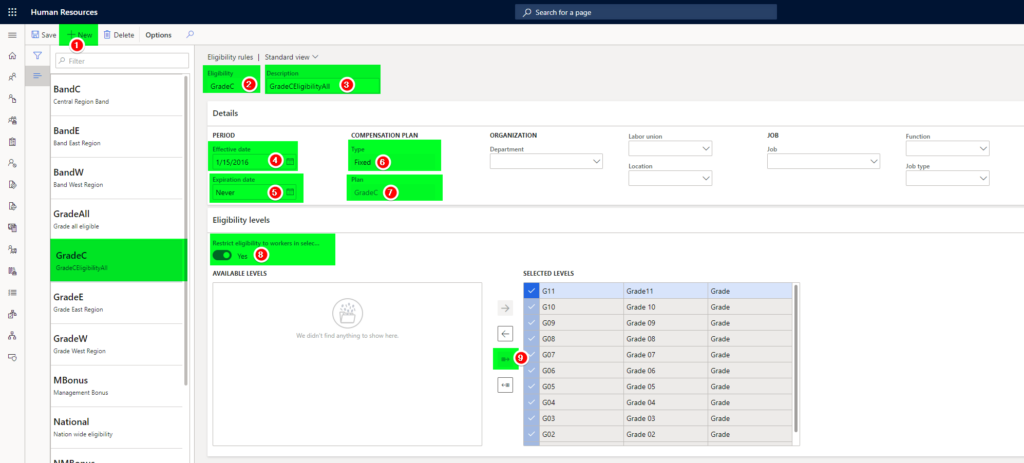
There can be scenarios where a company’s compensation structure changes based on a particular city where employees are located, or based on a department or based on the type of job that employees perform in the company. It can be very tedious for the HR teams to guess which employee belongs to which compensation plan every time they execute a fixed compensation related transaction on D365HR. That’s where eligibility rules help!
What are eligibility rules?
Eligibility rules helps in defining a criteria based on parameters such as Department, Job, Location, Job type, Job Function to restrict compensation plans only for the relevant employees.
Configure Eligibility rules on Dynamics 365 Human Resources
Step 1: Navigate to compensation management workspace>Links>Eligibility rules

Step 2: Add a New Eligibility rule with the details as highlighted below

I have defined a simple eligibility rule which is open for all employees aligned with the compensation levels. If Harry is employee who is assigned to a position that has a compensation level NL_R_01 then Harry is eligible to have a fixed compensation plan for NL retail.
We can also include some additional eligibility check points such as a plan will be eligible only for employees on a:
- Specific Department or
- Specific Job
- Specific Location
- Specific Labor union
- Specific Function
- Specific Job type
Or a combination of the above. In case there are multiple combinations, more than one eligibility rule can be defined for the same compensation plan.
That was the last step of our journey in designing Fixed compensation for Hogwarts Retail. The Compensation plans are ready with the eligibility defined now😀 When you hire a new employee or transfer an employee on D365HR the compensation structure comes to life and helps the HR teams to validation if the fixed compensation falls within the threshold limits or not, a example screenshot below:

Overview of blogposts related to compensation management series:
- D365HR and your company’s compensation policy!
- D365HR Compensation: Step 1: Job Compensation Levels
- D365HR Compensation: Step 2: Reference points
- D365HR Compensation: Step 3: Payrate conversion factor
- D365HR Compensation: Step 4: Compensation Plans
- D365HR Compensation: Step 5: Fixed compensation actions
Want to know more about Dynamics 365 Human Resources and Power Platform… Stay tuned and subscribe to my blog😀:
Do you think my blog helped you? Then please share it with your network on LinkedIn!
